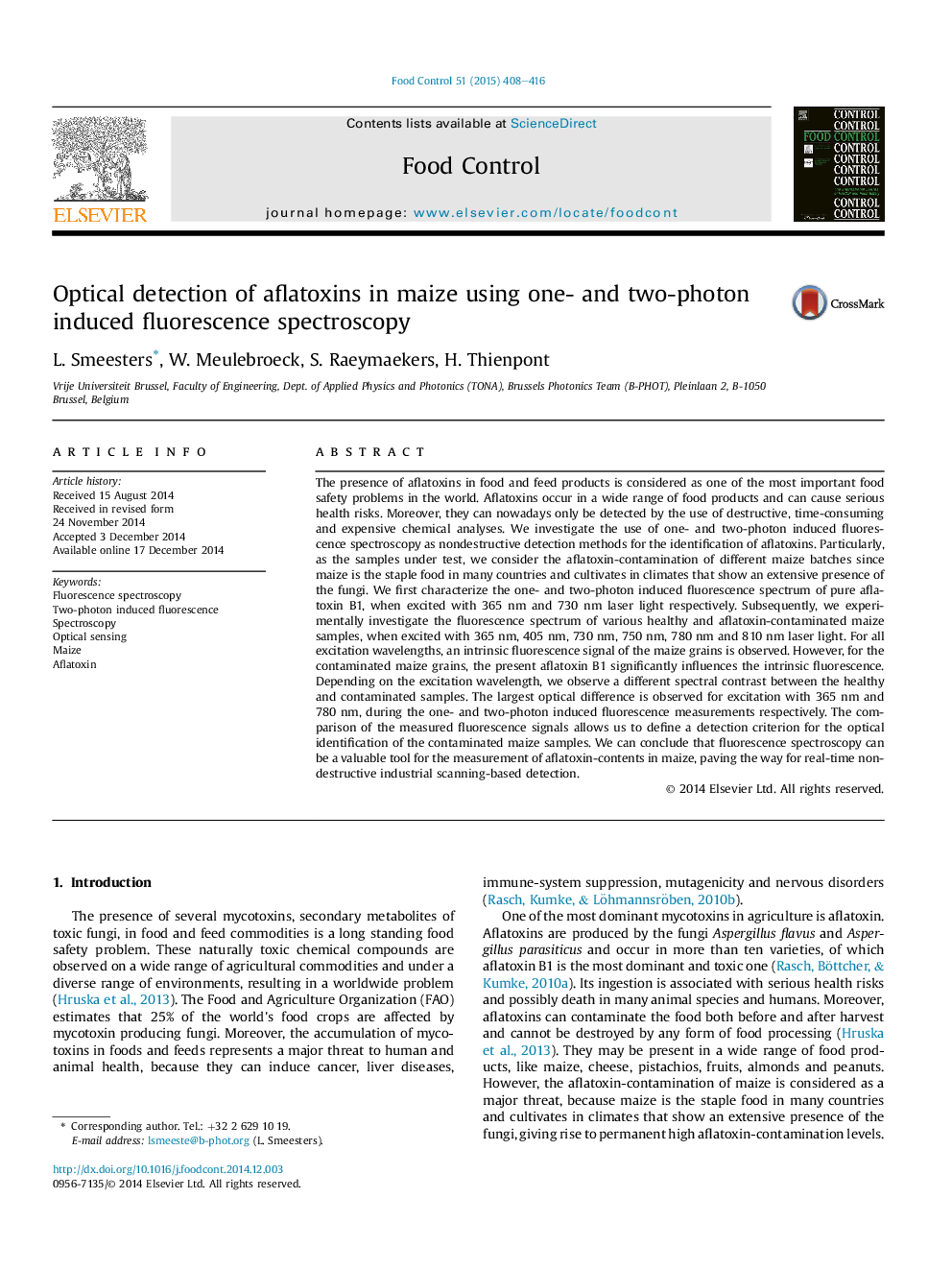| کد مقاله | کد نشریه | سال انتشار | مقاله انگلیسی | نسخه تمام متن |
|---|---|---|---|---|
| 6391154 | 1628411 | 2015 | 9 صفحه PDF | دانلود رایگان |

- Demonstrate the use of fluorescence spectroscopy for the detection of aflatoxins.
- One- and two-photon induced fluorescence measurement setup for solid food products.
- Characterize one- and two-photon induced fluorescence spectrum of maize grains.
- Examine influence of aflatoxin onto the intrinsic maize fluorescence spectrum.
- Demonstrate the optical, non-destructive detection of aflatoxin-contaminated maize.
The presence of aflatoxins in food and feed products is considered as one of the most important food safety problems in the world. Aflatoxins occur in a wide range of food products and can cause serious health risks. Moreover, they can nowadays only be detected by the use of destructive, time-consuming and expensive chemical analyses. We investigate the use of one- and two-photon induced fluorescence spectroscopy as nondestructive detection methods for the identification of aflatoxins. Particularly, as the samples under test, we consider the aflatoxin-contamination of different maize batches since maize is the staple food in many countries and cultivates in climates that show an extensive presence of the fungi. We first characterize the one- and two-photon induced fluorescence spectrum of pure aflatoxin B1, when excited with 365Â nm and 730Â nm laser light respectively. Subsequently, we experimentally investigate the fluorescence spectrum of various healthy and aflatoxin-contaminated maize samples, when excited with 365Â nm, 405Â nm, 730Â nm, 750Â nm, 780Â nm and 810Â nm laser light. For all excitation wavelengths, an intrinsic fluorescence signal of the maize grains is observed. However, for the contaminated maize grains, the present aflatoxin B1 significantly influences the intrinsic fluorescence. Depending on the excitation wavelength, we observe a different spectral contrast between the healthy and contaminated samples. The largest optical difference is observed for excitation with 365Â nm and 780Â nm, during the one- and two-photon induced fluorescence measurements respectively. The comparison of the measured fluorescence signals allows us to define a detection criterion for the optical identification of the contaminated maize samples. We can conclude that fluorescence spectroscopy can be a valuable tool for the measurement of aflatoxin-contents in maize, paving the way for real-time non-destructive industrial scanning-based detection.
Journal: Food Control - Volume 51, May 2015, Pages 408-416